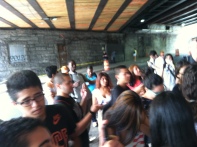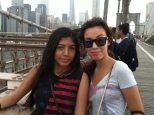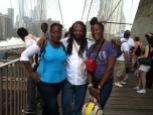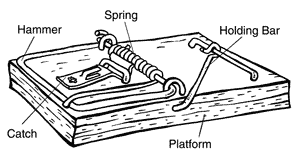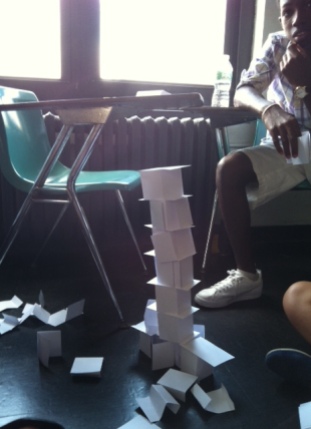This slideshow requires JavaScript.
Bridge Testing Convocation
We Made It! Bridges that is!
We have finally arrived at the culmination of our Summer program. After four weeks of hard work and even more fun we are ready to test our bridges. After a lunch of pizza courtesy of Brian and the STEP program we were ready to test the bridges. Will they hold Wayne’s weight? Will the collapse in a splendid cacophony of splintering wood? Now was the time to find out. Seven bridges entered – but how many would leave.
As your instructor for the last month I have to say that I thoroughly enjoyed myself. We had many laughs together and learned a lot about engineering ideas and where they come from. We grew up from detailed plans, to modified plans, to designing our own plans. We built tall towers, strong towers, catapults, race cars and bridges. We traveled to the Brooklyn Bridge and Central Park. I hope that you all had as much fun as I did.
Each year is unique and each student that I teach is also unique. This crew was no different. You’re enthusiasm and hard work confirm that I made the right choice in becoming a teacher. I had a great Summer but just like you I’m also looking forward to relaxing in August. Best of luck in all you do – now lets commence with the smashing (I mean testing) of the bridges.
Bridge Building 101
Now is the time for Bridge Building to commence. We now have the basic ideas behind bridges and what it takes to build them. We formed seven groups with three students in each group. Grouping was pretty much a random affair. Using sketches, sharing ideas, cooperating and communication will be key tools for our final week.
Each group will eventually receive 300 Popsicle sticks and Elmers Glue. The rules – each bridge must be at least two feet long, and be able to support your teacher or approximately 180 pounds. Now you are on your own. It is an amazing process to take your ideas and bring them to life. When we started we had detailed instructions on how to build catapults. We then modified kits for our racing cars. But now we are totally relying on our own ideas to build the bridges.
As the week has progressed each group has taken their design and building process in totally different directions. It has been a pleasure questioning your ideas, hearing your thought process and seeing all of you grow!
Walking Central Parks Arches and Bridges
Another beautiful day in New York. Today was spent visiting Central Park located in the center of Manhattan. We focused our trip on the bridges and arches of the park. But Central Park is such a marvelous feat of engineering we also got our fair share of its other features. There are twenty entrances to Central Park and each has a name to help you identify your location. It only made sense that we entered through Scholars Gate located on 60th Street and 5th Ave.
Entering the park we walked through the Central Park Zoo where we met the Dancing Goat and Dancing Bear! We were also treated to the musical chimes of the Delacourt Towers. The first two bridges we saw were the Denesmouth and the Willowdell. ALocated between these two was a statue of the dog Balto.
Taking along walk to the Trefoil Bridge we then located the statue of Hans Christian Anderson. Hans’ statue pointed us to the Alice in Wonderland Playground. Our group took a break to create poetic rubbings based on his work. A short walk past the Loeb boat house brought us to the Bethesda Fountain. This beautiful centerpiece is surrounded by a sweeping vista of the park. It is enough to make you forget that the park is man made and sculpted.
We were then treated to n operatic group. Free opera in the park! What a treat. They played violin and sang baritone and bass under the Terrace Bridge. The Terrace Bridge is without a doubt one of the most beautiful of all the bridges. Sweeping staircases, beautiful picture tiles, ornate sculpted walls, and an amazing acoustic system!
We visited with William Shakespeare (his statue at least) and also got a quick view of The Dairy and The chess and Checkers House. The Chess and Checkers House was donated by Bernard Baruch which was a great connection for us. After a few games we had a view of Playmates Arch and the Driprock. We took a short walk past Wollman’s Skating Rink and saw the Gapstow and Inscope Bridges.
When we exited the Inscope Bridge we were back where we started at Scholars Gate. We completed a short loop of the South Eastern part of the park. There are eleven bridges and twenty two arches in the park. We were able to do a visual study of their composition, style, building material, uses and purposes and unique features.
This information will be translated into our bridges that we construct for the last week of our Summer together. Remember – make them purty!
Crossing the Brooklyn Bridge
The Brooklyn Bridge is without a doubt a modern day marvel. Designed by the Roebling Family it has stood the test of time and entered the imagination of the American Public. As usual for a Summer in New York we were threatened by the weather. But with our spirits high and our umbrellas higher, we braved the elements to have a first hand look at this engineering feat.
Starting out from the Brooklyn side we had a similar view to the Roebling household from where they supervised the bridge’s construction. As we crossed the bridge we learned about all the features of the bridge. While it is a suspension bridge by design it also incorporates a truss design for added strength. Roebling added cables to further strengthen the bridge and while it was determined that they were not necessary, they were kept because it made the bridge look even more majestic.
We also paid attention to the surrounding features on both the Manhattan and Brooklyn sides of the bridge. The class also took rubbings of some of the plaques on the bridge that depict some of the engineering, construction, and general interest facts of the bridge. I was impressed by the groups ability to withstand a minor hurricane (small rain shower) as it passed by. And especially Carlos for keeping some random tourist nice and dry!
A few facts about the bridge.
The Brooklyn Bridge was initially designed by German immigrant John Augustus Roebling, who had previously designed and constructed shorter suspension bridges, such as Roebling’s Delaware Aqueduct in Lackawaxen, Pennsylvania, Waco Suspension Bridge in Waco, Texas, and the John A. Roebling Suspension Bridge in Cincinnati, Ohio.
While conducting surveys for the bridge project, Roebling sustained a crush injury to his foot when a ferry pinned it against a piling. After amputation of his crushed toes he developed a tetanus infection which left him incapacitated and soon resulted in his death, not long after he had placed his 32-year-old son Washington Roebling in charge of the project.
Washington Roebling also suffered a paralyzing injury as a result of decompression sickness shortly after the beginning of construction on January 3, 1870. This condition, first called “caisson disease” by the project physician Andrew Smith, afflicted many of the workers working within the caissons. After Roebling’s debilitating condition left him unable to physically supervise the construction firsthand, his wife Emily Warren Roebling stepped in and provided the critical written link between her husband and the engineers on site. Under her husband’s guidance, Emily studied higher mathematics, the calculations of catenary curves, the strengths of materials, bridge specifications, and the intricacies of cable construction. She spent the next 11 years assisting Washington Roebling, helping to supervise the bridge’s construction.
When iron probes underneath the caisson found the bedrock to be even deeper than expected, Roebling halted construction due to the increased risk of decompression sickness. He later deemed the aggregate overlying the bedrock 30 feet (9 m) below it to be firm enough to support the tower base, and construction continued.
The Brooklyn Bridge was opened for use on May 24, 1883. The opening ceremony was attended by several thousand people and many ships were present in the East Bay for the occasion. President Chester A. Arthur and New York Mayor Franklin Edson crossed the bridge to celebratory cannon fire and were greeted by Brooklyn Mayor Seth Low when they reached the Brooklyn-side tower. Arthur shook hands with Washington Roebling at the latter’s home, after the ceremony. Roebling was unable to attend the ceremony (and in fact rarely visited the site again), but held a celebratory banquet at his house on the day of the bridge opening.
Roebling Senior not only designed the bridge but also drew all the plans for its constructions so that any worker could understand their task and complete it to perfection.
Mouse Trap Race Cars
This week we will be focused on making mouse trap powered race cars!
Now whoever came up with the idea of mouse trap powered race cars had too much time on their hands. Or else they had too many mouse traps on their hands! The mouse trap is really a simple machine that uses a lever to accomplish it’s gruesome task. Energy is stored in the spring and then transferred to the hammer for the trap to work. We added string to the lever (which we extended) and attached that to an axle o our cars. The axle then rotated and transferred the stored energy to our wheels.
When we built our cars we added some variety to make it more interesting. If we all drove the same car it would be boring. Just like real life, some of our cars when faster, and some went farther with the same amount of energy being used. Some of the cars were very complicated and some required patience and quick thinking. The basic components of each car were the same however.
The principles of motion were also the same for each car. Motion is all around us yet it can be hard to explain. The Greeks tried over 2,000 years ago to describe motion but failed. They did not understand the concept of rate of change. If you describe motion there is a change in the rate over time. We use the formula s = d / t. Speed equals distance divided by time! We also dealt with friction. This is the force that results when sliding or rolling two objects past each other. Some friction is good – like the tires sticking to the ground. Some friction is bad – like the axles when attached to the frame of the car.
Hey Newton! How bout some help here!
Now we have all heard of Newton’s Laws, and this is a perfect example of how they apply to the real world.
Law #1: An object continues in its state of rest or motion in a straight line unless acted upon by an outside force, and it is compelled to change by the forces acting on it.
Law #2: Acceleration of an object is in direct proportion to the force acting on the object, and inversely affected by its mass.
Law #3: When one object asserts force on a second object, the second object exerts an equal and opposite force on the first object.
While there is no one perfect ways to build cars, we made adjustments to improve performance. And just like on the tracks of NASCAR, we had thrills and spills! Great job by all!




